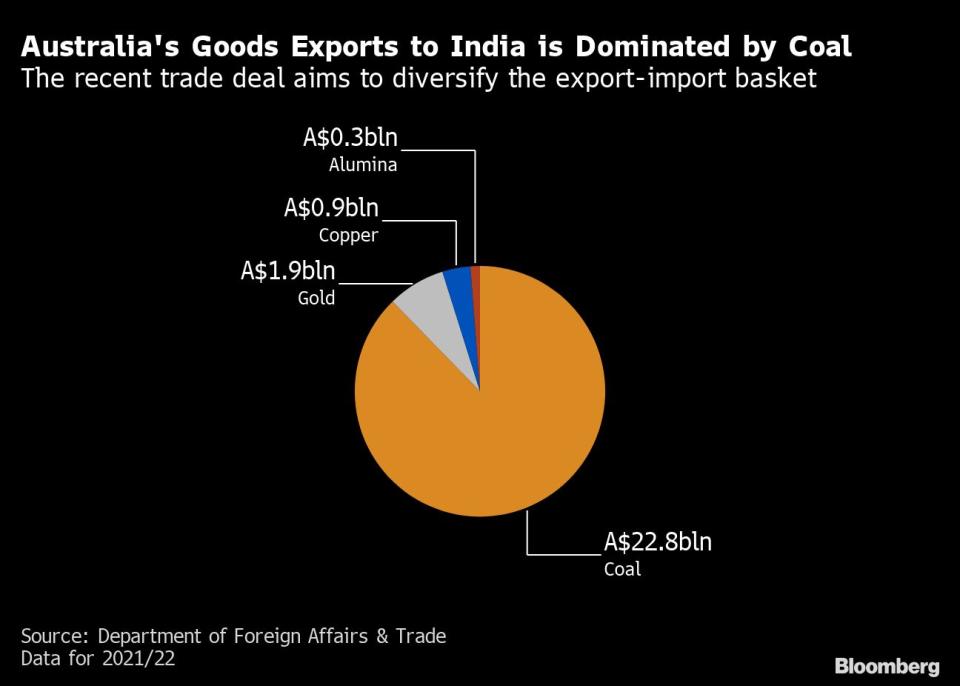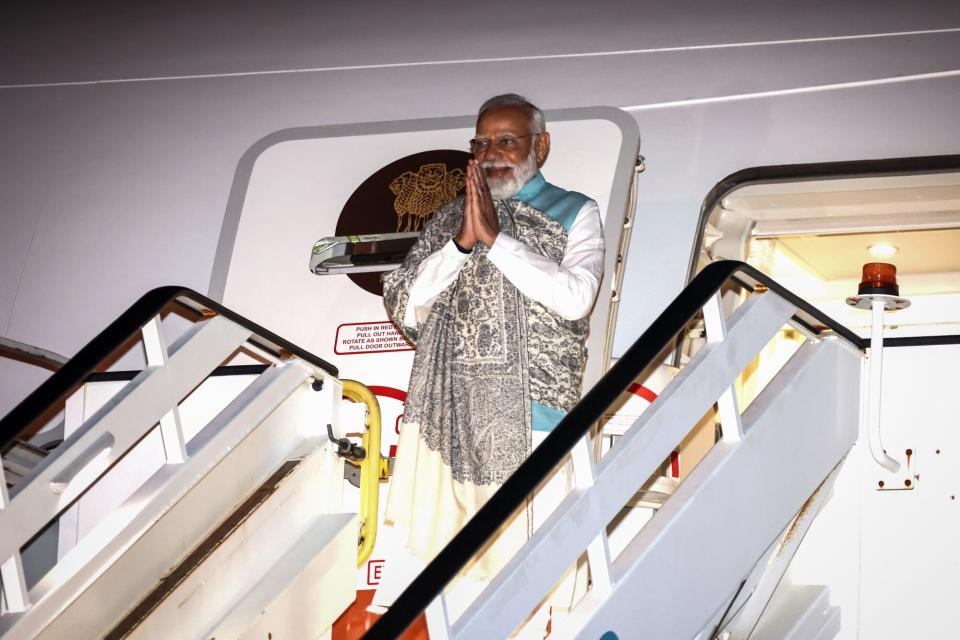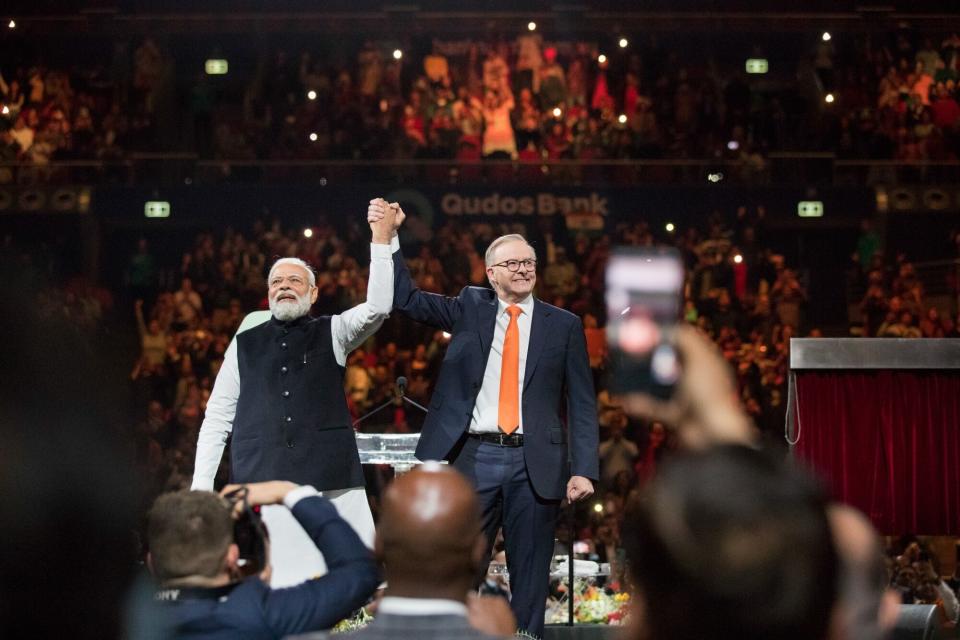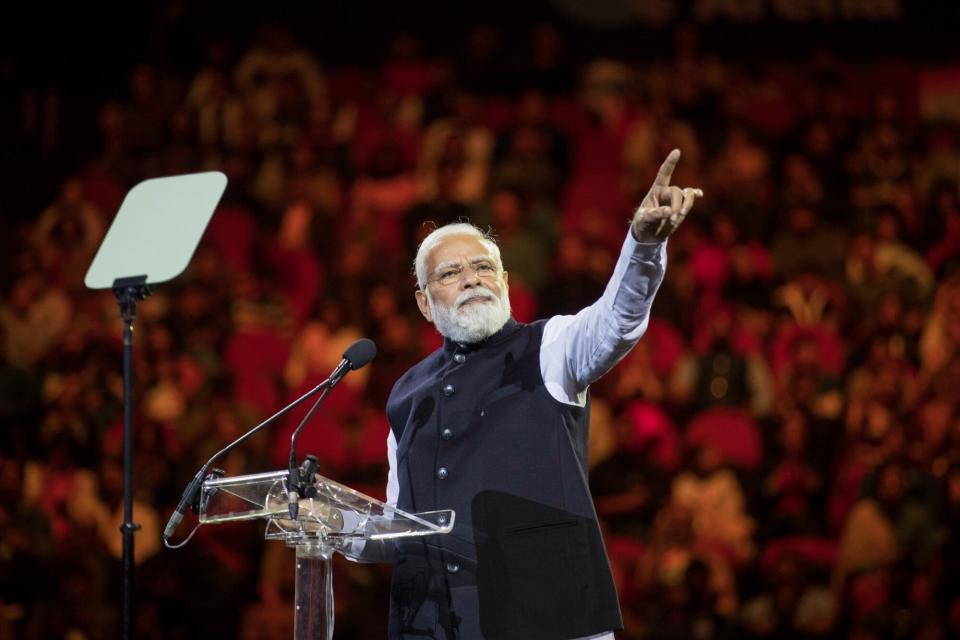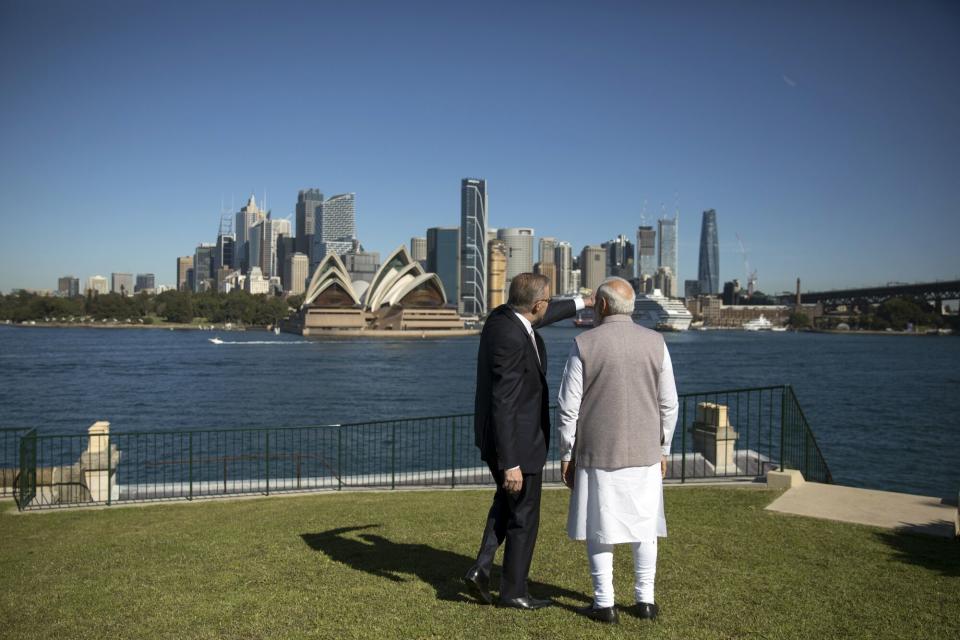Modi Revels in Packed Stadium in Sydney After Poll Loss in India
(Bloomberg) -- Thousands of expatriate Indians thronged Australia’s largest entertainment and sporting arena in Sydney to welcome Indian Prime Minister Narendra Modi during his first visit in nine years.
Most Read from Bloomberg
World’s Biggest Nuclear Plant May Stay Closed Due to Papers Left on Car Roof
Stocks Slide as Sentiment on Global Outlook Sours: Markets Wrap
Lula Lashes Out and Sends Warning to Central Bankers Everywhere
The fans came from across the country — on chartered flights from Melbourne dubbed “Modi Airways” where a one-way ticket cost A$249 ($165.17) and on the “Modi Express” coach from Canberra and Brisbane. Tuesday’s donations-funded event was held at the Qudos Bank Arena — the same venue where the Backstreet Boys performed in March and Sam Smith and Lizzo will take the stage later this year.
Cheers of “Modi, Modi” filled the sprawling arena as the Indian leader entered alongside Australian Prime Minister Anthony Albanese who said the celebrations coincided with his first year at the top job.
“I said to my friend the Prime Minister before the last time I saw someone on the stage here was Bruce Springsteen and he didn’t get the welcome that Prime Minister Modi has got,” Albanese said to loud cheers and claps. “Prime Minister Modi is the boss.”
On Wednesday, Albanese will hold a bilateral dialog with Modi at Kirribilli House — a beautiful harbor-side location in Sydney — to discuss trade, defense and geopolitics.
Modi’s rock star like welcome at the 21,000-seat arena — despite his party’s loss in a crucial state election earlier this month — underscores his public appeal among many Indians at home and abroad. He’s drawn huge crowds at similar venues in the UK and the US since he swept to power in 2014.
Non-resident Indians or NRIs are not a significant vote base — they can vote in Indian elections but need to fly down to cast their ballot. But they’re an important source of electoral funding and social media support for the Indian leader, especially as Modi looks to a third term in office in 2024.
In his 45-minute long speech, Modi hailed the fast-growing Indian diaspora in Australia for the improving India-Australia relations.
“Isn’t it your dream to see India become a developed nation like Australia,” Modi asked the crowd. “The dream that you have is in my heart too.”
While that dream of a developed nation seems out of reach in the near term for an economy with a per capita income of less than $3,000, Modi has other immediate goals. He’s seeking to boost India’s gross domestic product to the world’s third-largest before the end of the decade by turning the nation into a manufacturing hub.
The main reason for the Australia visit is “the populist one,” said Sushant Singh, a senior fellow at the Centre for Policy research, a New Delhi-based independent think tank. “His party leaders go out of the way to highlight how he is respected globally and done India proud on the global stage. The event may be held abroad but the audience is very much in India.”
The Indian leader also greets visiting foreign counterparts with great pomp and ceremony. When Australia’s Albanese visited India earlier this year the two leaders entered a stadium named after Modi in his home state of Gujarat on a glitzy gold chariot to thunderous applause.
“This visit is really good for the Indian community in Australia. It will be a boost for the relationship between the two countries,” said Ankur Aggarwal, a Sydney-based accountant, who was attending the event as part of the Australia Indian Business Council. “The way Modi thinks about the future is very inspiring.”
Despite the grand welcome, the visit was not without its critics and small knots of protesters had gathered outside the venue. Critics blame his Hindu nationalist government for taking a series of steps targeting India’s minority population, especially Muslims, since Modi extended his power with a stronger mandate in 2019.
On Tuesday, Modi also had closed-door meetings with Australian and Indian business leaders including Fortescue Metals Group Chairman Andrew Forrest and representations from pension fund AusSuper. He tweeted about his meeting with Gina Rineheart of Hancock Prospecting and local media reported that he also interacted with representatives from Bluescope Steel and Cochlear Ltd.
Modi’s visit was meant to be part of a summit of leaders from the so-called Quad grouping that includes Japan and the US. That meeting was later held on the sidelines of the Group of seven meet in Hiroshima, Japan after US President Joe Biden cut short his itinerary to return home and deal with debt ceiling talks.
Japan’s Fumio Kishida also canceled but Modi decided to press ahead with the visit to Australia, home to more than 700,000 people of Indian origin, the second-highest tax-paying diaspora behind the British.
Modi’s two-day trip comes as Canberra is attempting to strengthen its diplomatic and economic ties with New Delhi to offset growing strategic competition between the US and China, its largest trading partner. Australia views the South Asian nation’s burgeoning middle class as key to boost growth.
Australia is currently not among India’s top 10 trade partners, with bilateral trade standing at $27.1 billion last year, less than a tenth of that between Australia and China.
That relationship is expected to more than double to around A$60 billion (about $40 billion) over the next five years, after a trade pact kicked into place last year cutting or eliminating tariffs on a number of goods and services, and gives greater recognition of professional qualifications.
While Australia has emerged as a key source of thermal coal for India’s rising electricity needs it’s also hopeful of boosting its exports of premium wines, lentils, almonds and avocados. It’s also looking to sell critical minerals and hydrogen. On the flip side more Indian students and tourists are also expected to look to Australia as a destination.
“Our trading relationship really isn’t where it should be and that’s what’s going to be significant out of this visit,” said Lisa Singh, CEO of Australia India Institute. “What we want to see is our trading relationship extend to around the A$100 billion mark.”
--With assistance from Sudhi Ranjan Sen, Haidi Lun, Shery Ahn and Paul Allen.
(Updates with details.)
Most Read from Bloomberg Businessweek
The Man Who Spends $2 Million a Year to Look 18 Is Swapping Blood With His Father and Son
Maasai Are Getting Pushed Off Their Land So Dubai Royalty Can Shoot Lions
©2023 Bloomberg L.P.

 Yahoo Sports
Yahoo Sports 
